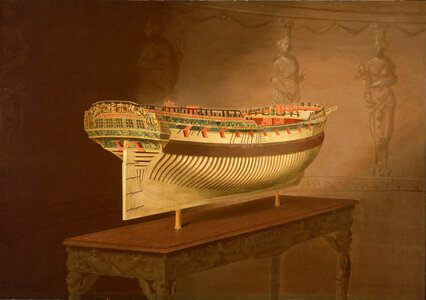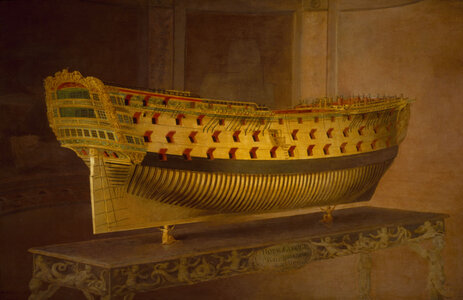Hello I do look for some borders we have to vwork within by building a ship with out it's rigg. Fore some this is an offending thing - to some of us other think it is a good possibility to give the eye an easier access to the deck's furniture without masts, rigging, deadeyes, blocks and shrouds.
Here the example of three famous paintings by Marshall showing British shipmodels in an idealistic manner.
The HMS ALERT here shows no guns and no further removabale deck's furniture:
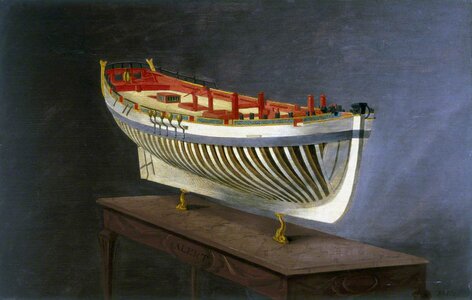
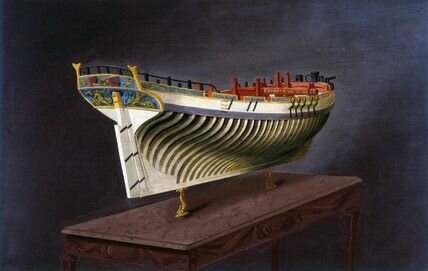
HMS EXPERIMENT is a trial for a newly reassembled 50-gun-ship in a beautyfull transom design and attractive colouring. Also here are no anchors, ropes binnacle or guns to be shown - but the gun port lids are openly shown. - why?
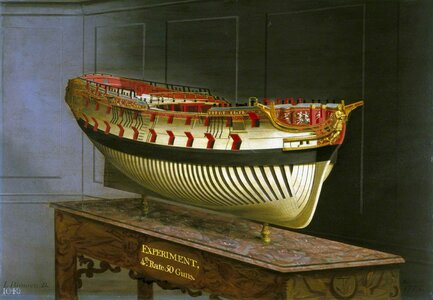
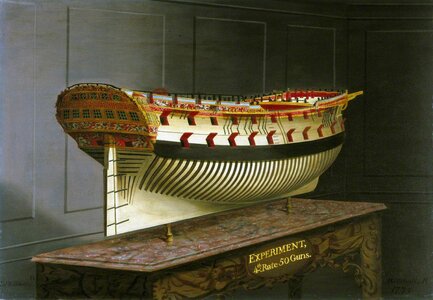
At least the HMS ENTERPRIZE of 1776 with a wounderfully detailled decoration fries but also lecking all furniture - so we can say this is a typical style of hull model ship parrange meint with most destinguished art of detailling.
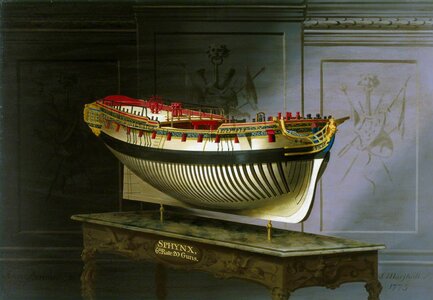
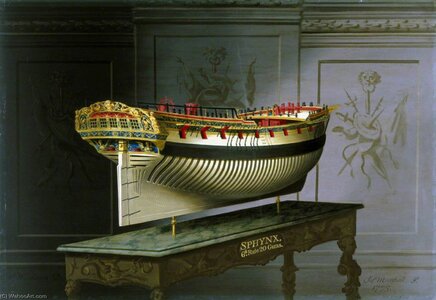
So this will enclosed the first chapter about the fine art of presentation a hull model.
So if you want to build an RN vessel If the Georgian period this is a legitimation to reduce the - all the - deck's furniture to it's minimum.
But what about other kinds of presenting a hull model what are other ways to do so?
If there is anybody interested please add your knowledge in here, please.
Here the example of three famous paintings by Marshall showing British shipmodels in an idealistic manner.
The HMS ALERT here shows no guns and no further removabale deck's furniture:


HMS EXPERIMENT is a trial for a newly reassembled 50-gun-ship in a beautyfull transom design and attractive colouring. Also here are no anchors, ropes binnacle or guns to be shown - but the gun port lids are openly shown. - why?


At least the HMS ENTERPRIZE of 1776 with a wounderfully detailled decoration fries but also lecking all furniture - so we can say this is a typical style of hull model ship parrange meint with most destinguished art of detailling.


So this will enclosed the first chapter about the fine art of presentation a hull model.
So if you want to build an RN vessel If the Georgian period this is a legitimation to reduce the - all the - deck's furniture to it's minimum.
But what about other kinds of presenting a hull model what are other ways to do so?
If there is anybody interested please add your knowledge in here, please.
Last edited:




